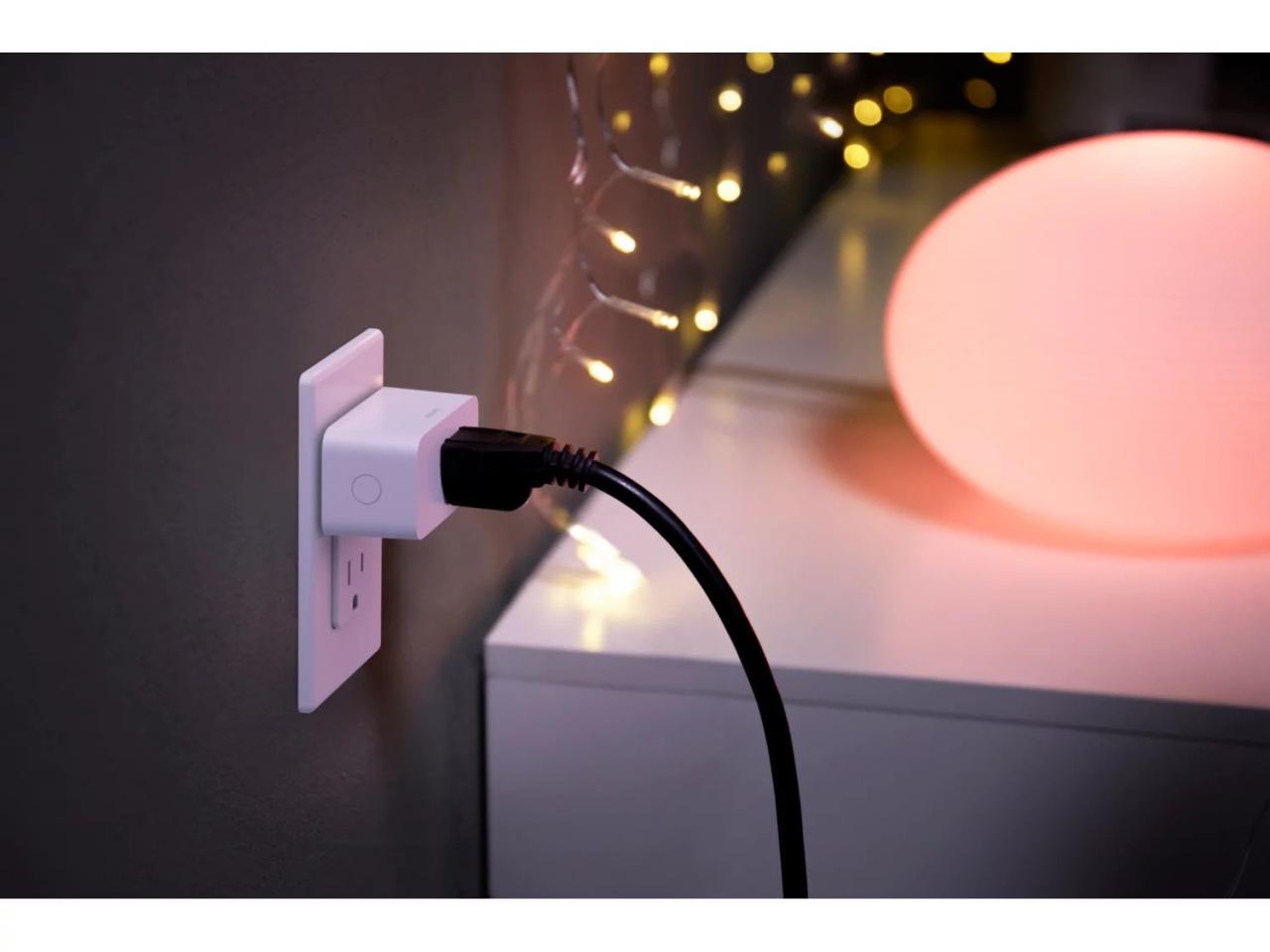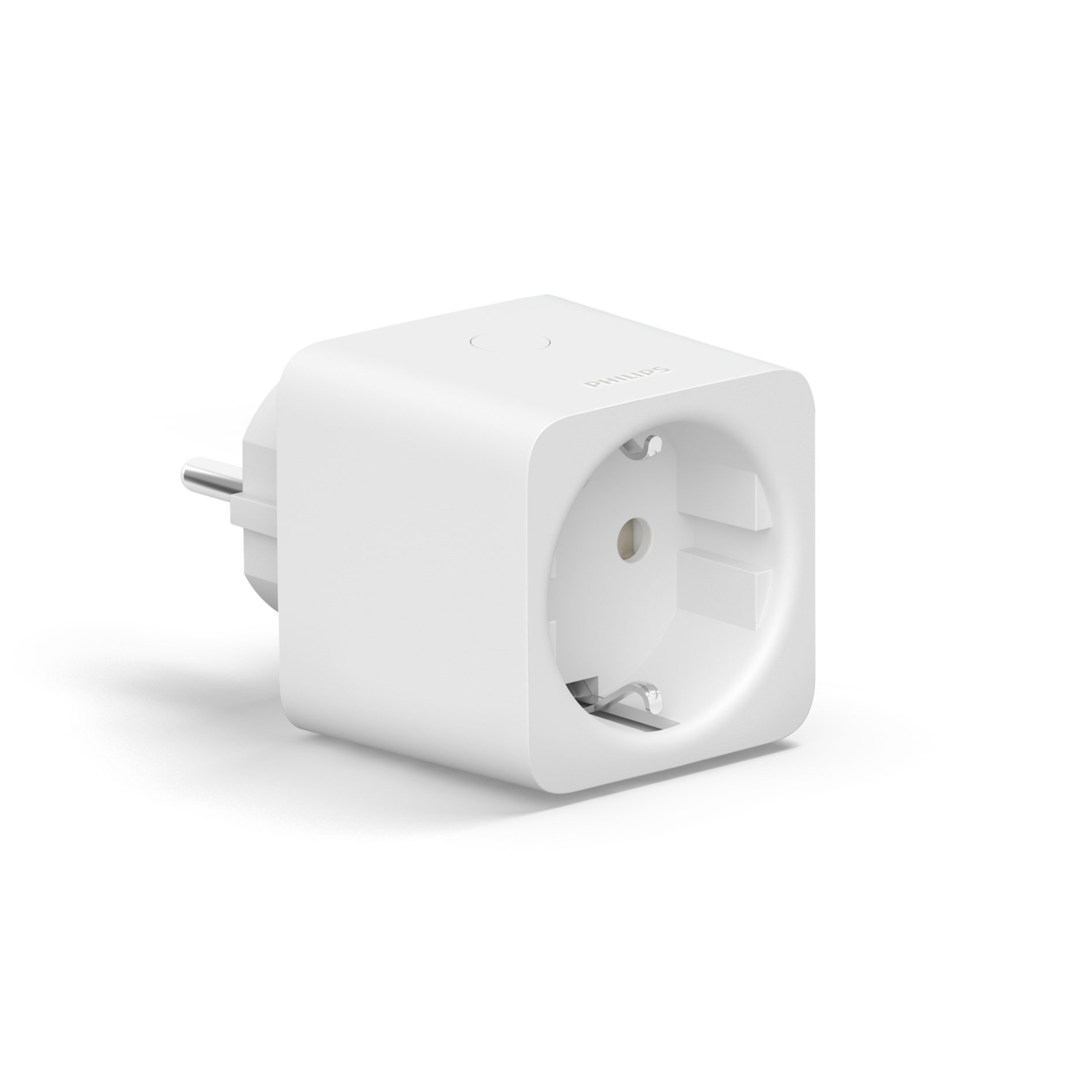philips smartplug sets the stage for this enthralling narrative, offering readers a glimpse into a world where convenience and energy efficiency intertwine seamlessly. This innovative device not only simplifies home automation but also empowers users to monitor and manage their energy consumption effortlessly. With its impressive features and compatibility with various smart home systems, the Philips SmartPlug is transforming how we interact with our everyday appliances.
From its straightforward setup process to its ability to integrate with popular ecosystems, the Philips SmartPlug enhances the user experience significantly. This smart plug promises to reduce energy waste while providing real-time insights into usage patterns, making it a must-have for modern households aiming to live more sustainably.
Features of Philips SmartPlug

The Philips SmartPlug is designed to bring convenience and efficiency to modern living, enabling users to take control of their electrical devices remotely. With its advanced technology, this smart plug not only simplifies daily tasks but also enhances energy management, making it a must-have for any smart home setup.
One of the standout features of the Philips SmartPlug is its Wi-Fi connectivity, allowing users to control devices from anywhere using a smartphone app. Additionally, it supports voice commands through popular virtual assistants like Amazon Alexa and Google Assistant, making it an integral part of a hands-free smart home experience. The energy monitoring capability provides insights into power usage, helping users optimize their energy consumption.
Key Specifications of Philips SmartPlug
A detailed comparison of smart plug specifications is crucial for understanding the advantages of the Philips SmartPlug over its competitors. Below are various aspects to consider:
- Wi-Fi Connectivity: Operates on a stable 2.4 GHz Wi-Fi network, which ensures broad coverage and reliable connectivity.
- Load Capacity: Can handle devices up to 16A, making it suitable for a wide range of appliances.
- Energy Monitoring: Tracks real-time energy usage, providing statistics that help users make informed decisions about their power consumption.
- Voice Control: Compatible with Alexa and Google Assistant, enabling hands-free operation.
- Remote Access: Control devices from anywhere using the Philips app, enhancing accessibility and convenience.
- Scheduling Options: Users can set timers for devices to turn on or off automatically, promoting energy savings.
- Compact Design: The slim design allows multiple SmartPlugs to be used in one outlet without blocking adjacent sockets.
The above features significantly contribute to an enhanced user experience by providing flexibility, ease of use, and efficiency. With the ability to monitor energy consumption, users can identify high-energy devices and adjust their usage patterns accordingly, which can lead to cost savings on electric bills. The convenience of remote access ensures that appliances can be turned on or off even when users are not home, providing peace of mind and security.
“Smart technology empowers users to manage their devices efficiently, paving the way for a sustainable lifestyle.”
Setup and Installation Process

Setting up the Philips SmartPlug is a straightforward process that allows users to easily integrate smart technology into their homes. This guide will walk you through the essential steps, ensuring a smooth installation experience.
The setup involves connecting the SmartPlug to your Wi-Fi network and the Philips Hue app, enabling you to control your devices remotely. Following the installation process diligently will help optimize the usage of your SmartPlug, ensuring seamless operation.
Step-by-Step Installation
To successfully install the Philips SmartPlug, follow these detailed steps:
- Unbox the SmartPlug: Carefully remove the SmartPlug from its packaging and ensure all components are intact.
- Download the Philips Hue App: The app is available on both iOS and Android platforms. Install it on your smartphone or tablet before proceeding.
- Connect to Wi-Fi: Ensure that your Wi-Fi network is functioning and the credentials are noted. The SmartPlug will require a stable 2.4 GHz network for optimal performance.
- Plug in the SmartPlug: Insert the SmartPlug into a wall socket, ensuring it is powered on. A light indicator will signal that it is ready for setup.
- Open the Philips Hue App: Launch the app and create an account or log in if you already have one.
- Add SmartPlug: Navigate to the “Add device” section in the app. Select “SmartPlug” from the list of available devices.
- Follow On-screen Instructions: The app will guide you through the process of connecting the SmartPlug to your Wi-Fi network. Follow these prompts carefully.
- Test the Connection: Once setup is complete, test the SmartPlug by turning on a connected device through the app. Ensure responsiveness and reliability.
Troubleshooting Tips
While the installation process is relatively effortless, users may encounter issues. Here are some common troubleshooting tips to resolve them:
“Ensure that the SmartPlug is within range of your Wi-Fi router to avoid connectivity issues.”
– Reset the SmartPlug: If connection fails, hold the reset button (usually located on the device) for several seconds until the light indicator flashes, signaling a reset.
– Check Wi-Fi Credentials: Double-check that the Wi-Fi password entered in the app is correct. A simple typo can prevent connection.
– Reboot Router: Sometimes, the issue may be due to the router. Restarting it can help re-establish connections.
– Ensure App Updates: Keeping the Philips Hue app updated can prevent compatibility issues with the SmartPlug.
– Verify Device Compatibility: Ensure that the devices you are connecting to the SmartPlug are compatible and functional.
Installation Requirements Checklist
Before beginning the installation process, ensure you have the following items ready:
– Philips SmartPlug
– Smartphone or tablet with the Philips Hue app installed
– Access to a stable Wi-Fi network (2.4 GHz)
– Compatible devices to connect to the SmartPlug
– A power outlet for the SmartPlug
Having all these requirements in place will facilitate a smooth setup experience, helping you enjoy the benefits of your Philips SmartPlug without delays or complications.
Integration with Smart Home Systems
The Philips SmartPlug stands out not only as a versatile smart device but also as a pivotal component in the modern smart home ecosystem. Its ability to seamlessly integrate with various smart home systems enhances the user experience, making it an essential tool for those looking to streamline their home automation.
Philips SmartPlug is designed to work with popular smart home ecosystems such as Amazon Alexa, Google Assistant, and Apple HomeKit. This compatibility allows users to control their plugged-in devices through voice commands, facilitating a hands-free experience. Additionally, the SmartPlug can be managed via smartphone applications, enabling users to schedule on/off times, monitor energy usage, and create automation routines that align with their lifestyles.
Benefits of Using Philips SmartPlug in a Smart Home Setup
Incorporating the Philips SmartPlug into a smart home setup offers numerous advantages. Firstly, it improves energy efficiency by allowing users to track energy consumption and set schedules to reduce waste. Secondly, it enhances convenience by enabling remote access to devices, ensuring that users can manage their home environment from anywhere. Lastly, the integration fosters increased security, as users can simulate presence at home by scheduling devices to turn on and off during specific times.
To illustrate the breadth of compatibility and benefits, here are some devices that work well with Philips SmartPlug:
- Smart bulbs from Philips Hue: These can be controlled alongside the SmartPlug for synchronized lighting and appliance management.
- Smart speakers like Amazon Echo and Google Nest: Users can issue commands via voice, making it easier to control multiple devices.
- Smart thermostats: Automating heating and cooling systems in coordination with other devices can lead to significant energy savings.
- Smart security cameras: Scheduling lights to turn on when the cameras detect motion enhances home security.
- Smart TVs and entertainment systems: Users can turn devices on or off before watching a movie or show, creating a seamless viewing experience.
Energy Monitoring and Savings: Philips Smartplug
The Philips SmartPlug stands out as an essential tool for anyone looking to optimize their energy consumption and monitor usage effectively. By providing real-time data on electricity usage, it enables users to make informed decisions about their energy habits, ultimately leading to both environmental benefits and cost savings. The intuitive interface and integration features further enhance its capability in promoting energy efficiency in the home.
The Philips SmartPlug’s energy monitoring feature is designed to track the power consumption of connected devices, providing insights into daily, weekly, and monthly usage. This level of monitoring is crucial for understanding which appliances consume the most energy and at what times they are used most frequently. Users can access energy reports via a smartphone app, allowing them to analyze patterns and adjust usage accordingly.
Calculating Potential Energy Savings
Understanding potential energy savings involves careful analysis of the data provided by the SmartPlug. Users can identify high-energy-consuming devices and determine optimal usage times to reduce costs. By calculating the cost per kilowatt-hour (kWh) and tracking the usage hours, users can create a detailed picture of their energy expenditure.
For example, if a device consumes 200 watts and operates for 5 hours daily, the calculation for energy usage would be as follows:
Daily Energy Consumption (kWh) = (Wattage × Hours Used) / 1000
Using the above formula:
Daily Energy Consumption = (200W × 5h) / 1000 = 1 kWh
If the cost of electricity is $0.12 per kWh, then the daily cost would be:
Daily Cost = Daily Energy Consumption × Cost per kWh
Daily Cost = 1 kWh × $0.12 = $0.12
This simple calculation shows how understanding device usage can translate into financial savings.
Optimizing Energy Consumption Using Smart Plugs
To maximize energy efficiency with the Philips SmartPlug, users can implement several strategies. The following tips provide practical approaches to reduce energy waste:
1. Schedule Usage: Set timers or schedules for devices to operate only when needed, reducing unnecessary energy consumption.
2. Monitor Idle Time: Identify devices that consume power while idle (phantom load) and schedule their shut-off during non-usage hours.
3. Prioritize Energy-Efficient Devices: Replace older appliances with energy-efficient models and track their performance using the SmartPlug.
4. Utilize Grouping Features: If multiple devices are used together, group them under a single SmartPlug to control their energy usage collectively.
5. Conduct Regular Reviews: Frequently check the energy use reports generated by the SmartPlug to spot trends and adjust habits accordingly.
By implementing these strategies, users can harness the full potential of the Philips SmartPlug, leading to significant energy savings and a more sustainable lifestyle.
Query Resolution
What devices are compatible with Philips SmartPlug?
Philips SmartPlug is compatible with a variety of smart home devices, including Philips Hue lights, Amazon Alexa, Google Assistant, and other devices that support the Zigbee protocol.
Can I schedule my devices with the Philips SmartPlug?
Yes, the Philips SmartPlug allows you to set schedules for your connected devices via the app, enabling automatic on/off timings based on your preferences.
Does the Philips SmartPlug require a hub for operation?
While the Philips SmartPlug can work with a hub for expanded functionality, it can also operate independently through compatible smart home systems like Google Home or Amazon Alexa.
Is the Philips SmartPlug energy efficient?
Yes, the Philips SmartPlug is designed to monitor energy usage and help users identify ways to save energy, contributing to lower electricity bills.
Can I control the Philips SmartPlug remotely?
Absolutely! The Philips SmartPlug can be controlled remotely through the associated app, allowing you to manage your devices from anywhere.
The tuya sensor is revolutionizing smart home technology by providing real-time monitoring and control. This innovative device allows users to connect various sensors seamlessly, improving safety and efficiency in their homes. With the Tuya app, managing your home has never been easier, as it integrates multiple features into one user-friendly platform.
In a world where finding lost devices can be a hassle, smart find samsung offers a convenient solution. This feature allows users to locate their Samsung devices effortlessly. Whether it’s a smartphone or tablet, the Smart Find feature provides precise tracking, ensuring you never misplace your gadgets again.